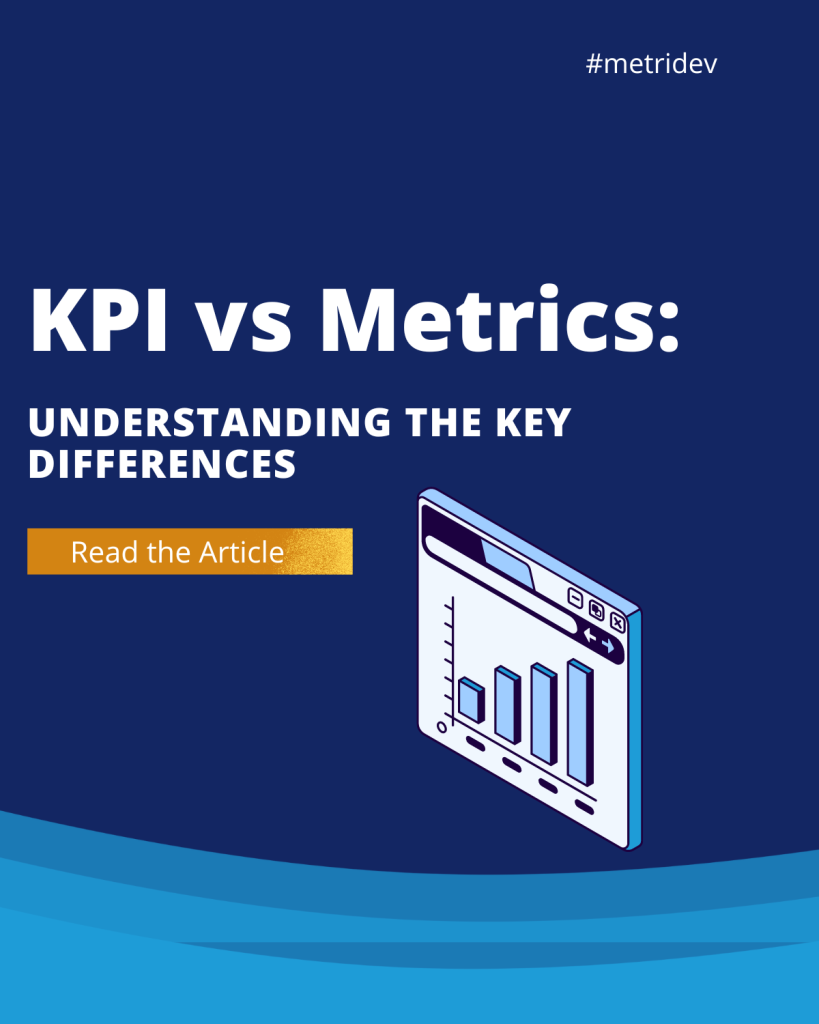Introduction
In today’s fast-paced and technology-driven world, businesses rely heavily on their IT infrastructure to drive growth and stay competitive. Furthermore, with the increasing complexity of IT systems and the imperative to deliver value to customers, it has become crucial for organizations to measure and monitor their operational performance. This is where IT operational metrics come into play. By meticulously tracking and analyzing key performance indicators (KPIs) in the IT industry, businesses can gain valuable insights. These insights, in turn, empower organizations to make data-driven decisions, optimizing their operations and paving the way for sustainable business growth.
What are Basic Operational Metrics?
Before diving into IT operational metrics, it is important to understand the concept of operational metrics in general. Operational metrics are quantifiable measurements that organizations use to assess the efficiency and effectiveness of their operations. These metrics provide insights into various aspects of the business, such as productivity, quality, customer satisfaction, and financial performance. Examples of basic operational metrics include cycle time, defect rate, customer retention rate, and cost per unit.
How do you Measure Operations?
Measuring operations involves collecting relevant data and analyzing it to gain insights into the performance of the business. The first step is to identify the key areas or processes that need to be measured. This can include IT infrastructure, software development, customer support, or any other aspect of the business that is critical to its success. Once the key areas are identified, organizations need to define specific metrics that align with their goals and objectives. These metrics can be quantitative or qualitative, depending on the nature of the process being measured. For example, if the goal is to measure customer satisfaction, organizations can use metrics such as Net Promoter Score (NPS) or Customer Effort Score (CES).
What is Metrics in the IT Industry?
In the IT industry, metrics refer to the measurements that organizations use to evaluate the performance of their IT systems, processes, and teams. These metrics provide insights into various aspects of IT operations, such as system availability, response time, incident resolution time, and resource utilization. By tracking and analyzing these metrics, organizations can identify areas of improvement, optimize their IT operations, and ensure that their systems are aligned with business objectives. Metrics in the IT industry are crucial for effective IT management and for making data-driven decisions that enhance business growth.
Importance of IT Operational Metrics for Business Growth
IT operational metrics play a vital role in driving business growth. By monitoring and measuring key performance indicators in the IT industry, organizations can identify bottlenecks, inefficiencies, and areas of improvement in their IT operations. This enables them to take proactive measures to optimize their IT systems and processes, resulting in improved productivity, cost savings, and customer satisfaction. IT operational metrics also provide organizations with valuable insights to make informed decisions about resource allocation, technology investments, and strategic planning. By leveraging IT operational metrics, businesses can stay ahead of the competition, adapt to changing market dynamics, and achieve sustainable growth.

Key Performance Indicators (KPIs) in the IT Industry
Key performance indicators (KPIs) are specific metrics that organizations use to measure their progress towards achieving strategic objectives. In the IT industry, KPIs play a crucial role in evaluating the performance of IT systems, processes, and teams. Moreover, some common KPIs in the IT industry include system uptime, mean time to resolution (MTTR), first call resolution rate, customer satisfaction score (CSAT), and employee productivity. By utilizing these KPIs, organizations gain a clear and comprehensive understanding of their IT performance. Consequently, this insight empowers them to identify areas that require attention or improvement.
What is the KPI of an IT Manager?
For an IT manager, the key performance indicators (KPIs) can vary depending on the specific role and responsibilities. However, some common KPIs for an IT manager include system uptime, incident response time, project delivery time, budget adherence, and employee satisfaction. These KPIs help IT managers assess their effectiveness in managing IT operations, delivering projects on time, and ensuring customer satisfaction. By tracking these KPIs, IT managers can identify areas of improvement, implement corrective actions, and drive continuous improvement in IT operations.
How to Choose the Right IT Operational Metrics for Your Business
Choosing the right IT operational metrics for your business can be a challenging task. It is important to select metrics that align with your business goals, objectives, and industry best practices. Start by identifying the key areas of your IT operations that are critical to your business success. For example, if you are a software development company, metrics such as code quality, release frequency, and customer feedback can be important. Once you have identified the key areas, define specific metrics that are measurable, relevant, and actionable. Avoid the temptation of tracking too many metrics, as it can lead to information overload and make it difficult to focus on what really matters. It is important to strike a balance between having enough metrics to provide meaningful insights and avoiding excessive complexity.
Implementing IT Operational Metrics: Best Practices
Implementing IT operational metrics requires a systematic approach and adherence to best practices. Here are some key steps to consider:
- Define clear objectives: Firstly, it’s essential to clearly define the objectives and desired outcomes of implementing IT operational metrics. By doing so, you can ensure that the metrics align seamlessly with your overarching business goals.
- Identify relevant metrics: Next, identify the key areas of your IT operations that necessitate measurement. Opt for metrics that not only align with your objectives but also offer meaningful insights into those specific areas.
- Establish data collection mechanisms: Following that, establish robust systems and processes for collecting the necessary data required. This may involve integrating monitoring tools, setting up data repositories, or implementing meticulous data collection procedures.
- Analyze and interpret the data: Subsequently, analyze the collected data to gain insights into the performance of your IT operations. Utilize data visualization techniques to present the findings in a clear and meaningful manner.
- Take corrective actions: Armed with insights from data analysis, identify areas of improvement and implement corrective actions as necessary. These actions may encompass process improvements, resource reallocation, or strategic technology investments.
- Continuously monitor and refine: Lastly, emphasize the importance of regularly monitoring IT operational metrics to ensure ongoing relevance and accuracy. Periodically refine the metrics as needed to align with the evolving landscape of changing business needs.
IT Operational Metrics PPT
To effectively communicate the importance of IT operational metrics and their impact on business growth, consider creating a PowerPoint presentation (PPT). A well-designed PPT can help convey complex information in a visually appealing and easily understandable format. Include relevant data, charts, and graphs to illustrate the key points and support your message. Use clear and concise language to explain the concepts and provide actionable insights. Remember to tailor the content of the PPT to the specific audience and their level of technical understanding.
Tools and Software for Tracking and Analyzing IT Operational Metrics
There are several tools and software available in the market that can help organizations track and analyze IT operational metrics. These tools automate the data collection process, provide real-time visibility into IT performance, and enable organizations to make data-driven decisions. A popular tool for tracking and analyzing IT operational metrics is Metridev. When selecting a tool, consider factors such as ease of use, scalability, integration capabilities, and cost. It is important to choose a tool that aligns with your specific requirements and supports the metrics that are critical to your business.
Outsourcing IT Operational Metrics: Pros and Cons
Outsourcing IT operational metrics is an option that organizations can consider, especially if they lack the in-house expertise or resources to implement and manage the metrics themselves. They can provide access to specialized skills, knowledge, and tools that may not be available internally. It can also free up internal resources to focus on core business activities. However, outsourcing also comes with its own set of challenges. Organizations need to carefully consider factors such as data security, confidentiality, contract management, and vendor selection. It is important to establish clear expectations, define service level agreements (SLAs), and have a robust governance framework in place to ensure successful outsourcing of IT operational metrics.
IT Operational Metrics Examples
To better understand how IT operational metrics can be applied in real-world scenarios, here are a few examples:
- System Availability: This metric measures the percentage of time that a system is available for use. A high system availability indicates that the system is reliable and accessible to users.
- Incident Resolution Time: This metric measures the average time taken to resolve incidents or technical issues. A low incident resolution time indicates efficient incident management and minimal disruption to business operations.
- Customer Satisfaction Score: This metric measures the satisfaction level of customers with the IT services provided. A high customer satisfaction score indicates that the IT services are meeting or exceeding customer expectations.
- Change Success Rate: This metric measures the percentage of changes that are implemented successfully without causing disruptions or incidents. A high change success rate indicates effective change management processes and minimizes the risk of service disruptions.
Conclusion: Leveraging IT Operational Metrics for Sustainable Business Growth
In conclusion, IT operational metrics are essential for organizations to optimize their IT operations, drive business growth, and stay competitive in today’s technology-driven world. By measuring and monitoring key performance indicators (KPIs) in the IT industry, businesses can gain valuable insights, identify areas of improvement, and make data-driven decisions. It is important to choose the right metrics that align with business goals and objectives, implement them effectively using best practices, and leverage tools and software for tracking and analyzing IT operational metrics. Investing in training and certifications can further enhance the capabilities of the IT team. Whether implemented internally or outsourced, IT operational metrics provide organizations with the necessary insights to achieve sustainable business growth in the digital era.
To learn more about how to optimize your IT operations, read our article about Test Coverage Metrics.
IT METRICS TO BECOME AN EXPERT















Leave a Reply